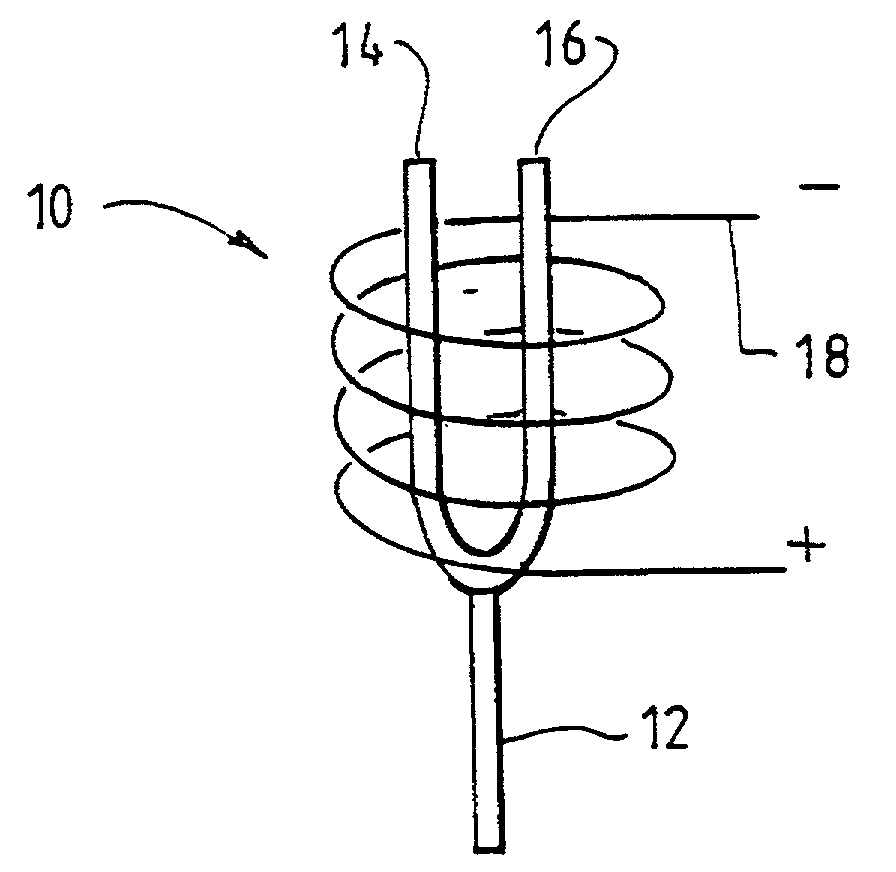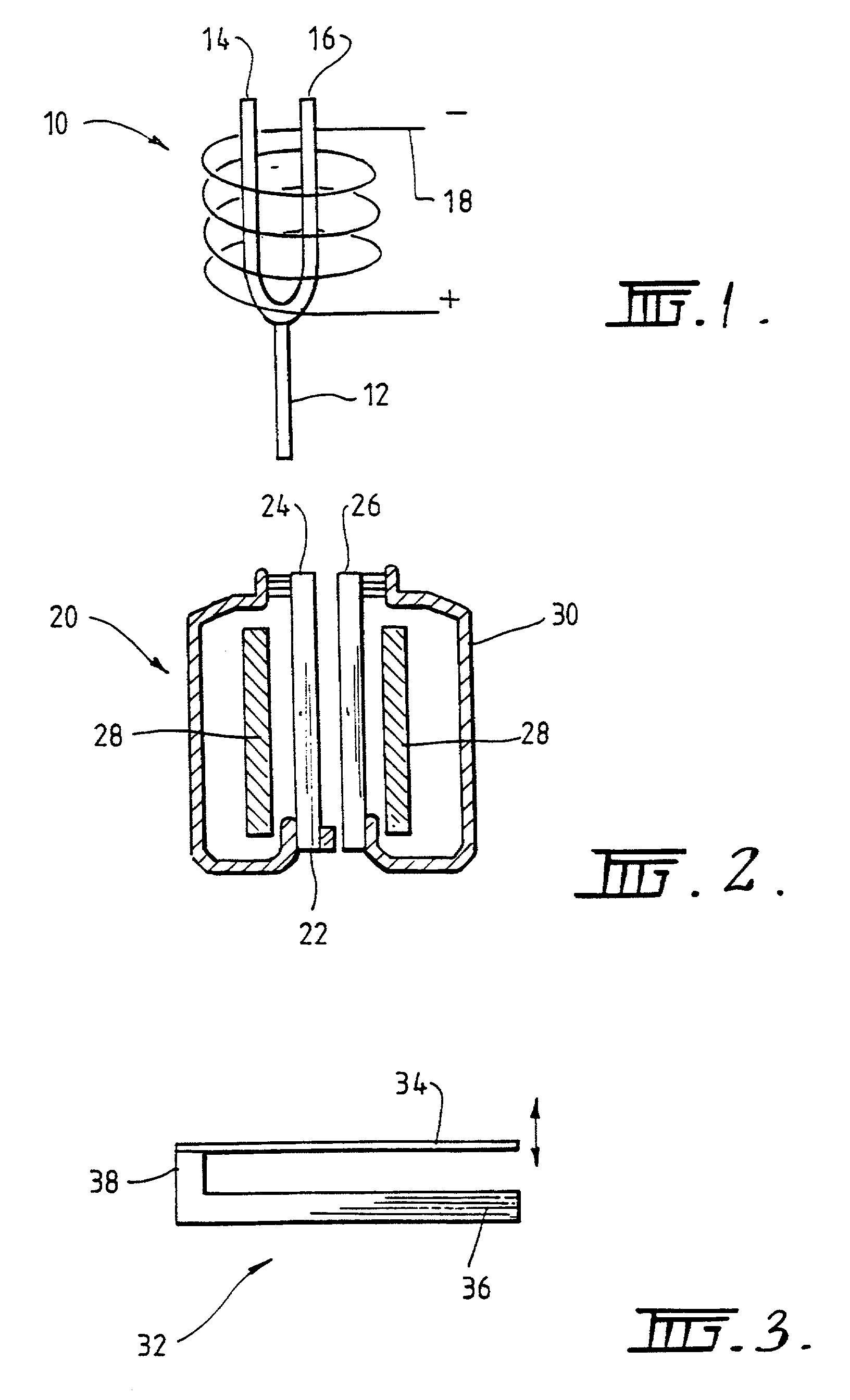Electrically operated tuning fork
- Summary
- Abstract
- Description
- Claims
- Application Information
AI Technical Summary
Benefits of technology
Problems solved by technology
Method used
Image
Examples
Embodiment Construction
[0048]An electrically operated tuning fork according to a preferred embodiment of the present invention is shown schematically at 10 in FIG. 1. The electrically operated tuning fork 10 includes a tuning fork 12 with tines 14 and 16, and an electrical coil 18 disposed coaxially about tuning fork 12. The tines 14 and 16 project from coil 18 by approximately 15% of their length. Thus, when an electrical current is applied to coil 18, the magnetic field produced by current in the coil is longitudinal and induces magnetic fields in and about tines 14 and 16 that are mutually repulsive, even in the absence of any other magnetically active material. The winding of the coil 18 along almost the full length of the tines 14 and 16 means that the electrically operated tuning fork 10, although of low efficiency, can nevertheless be used to produce sufficiently large magnetic fields to provide the deflection necessary for use in optic fibre scanners, such as optical fibre confocal microscopes.
[00...
PUM
 Login to View More
Login to View More Abstract
Description
Claims
Application Information
 Login to View More
Login to View More - R&D
- Intellectual Property
- Life Sciences
- Materials
- Tech Scout
- Unparalleled Data Quality
- Higher Quality Content
- 60% Fewer Hallucinations
Browse by: Latest US Patents, China's latest patents, Technical Efficacy Thesaurus, Application Domain, Technology Topic, Popular Technical Reports.
© 2025 PatSnap. All rights reserved.Legal|Privacy policy|Modern Slavery Act Transparency Statement|Sitemap|About US| Contact US: help@patsnap.com



